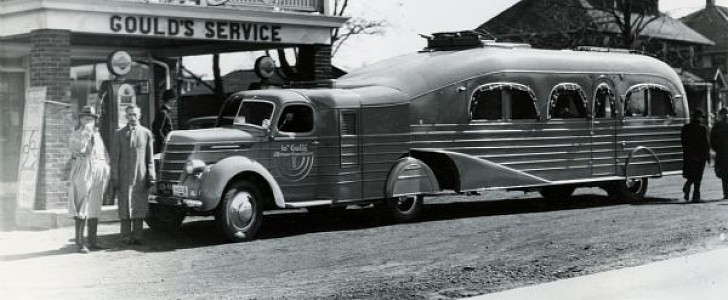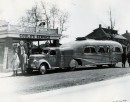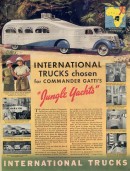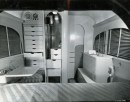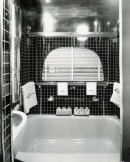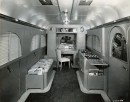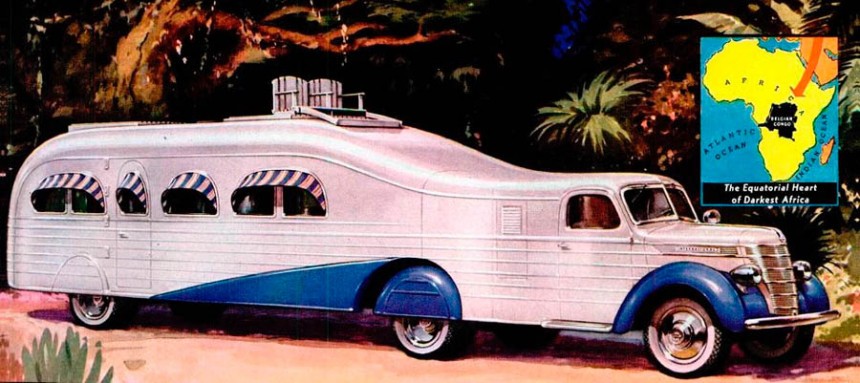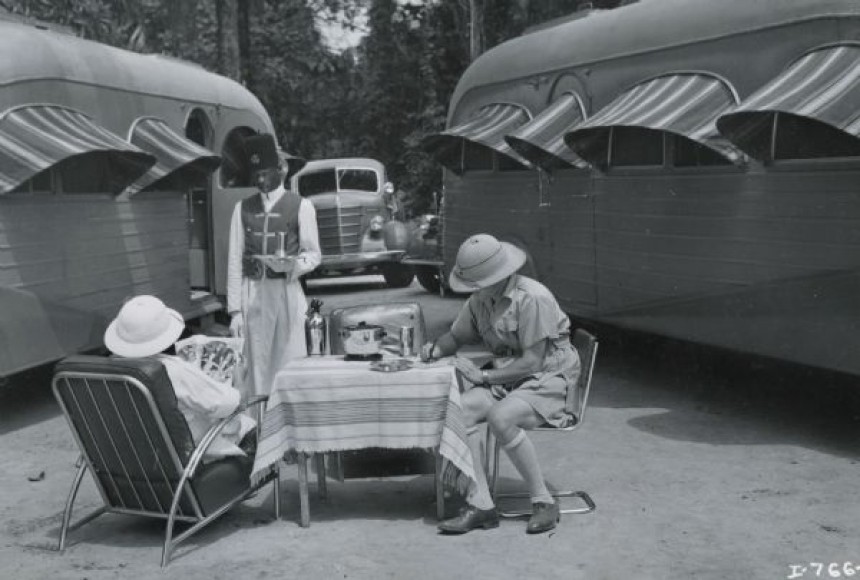Vanlife in all its iterations and manifestations has been in the headlines a lot in the past couple of years, and it doesn’t look like any of them are going away. But modern glamping, even by celebrity standards, can barely hold a candle to Commander Attilio Gatti’s motorhome of choice.
Back in the 1940s, it was called the Jungle Yacht. Two such units were made, and the whereabouts of either remains a mystery. They weren’t just massive, very lavish motorhomes that provided the comforts of a luxury hotel suite on the road; they were vehicles that were used for two separate African expeditions, which, in turn, made them historic vehicles.
First things first. Attilio Gatti is considered one of the last great African explorers of the 20th century. Born and raised in Italy, he went broke with his seventh expedition to the continent, which is when he decided to move to America in the hope of finding a way to continue pursuing his dream. He arrived in the U.S. in 1930 and married his second wife, Ellen.
Ahead of his tenth and supposedly last expedition, Gatti secured a sponsorship from International Harvester, which would allow him to continue exploring the continent and secured his position as a popular author, filmmaker, and speaker on the topic. International Harvester built him two Jungle Yachts and lent him an additional eight trucks for the caravan that would see him explore the Belgian Congo between 1938 and 1940. Gatti also used the Jungle Yachts for his 11th expedition, which took place between 1947 and 1948, to the Rwenzori Mountains at the border of Uganda.
The tenth expedition is the most famous, and was documented on film, a snippet of which you will find at the bottom of the page. Gatti’s goal was to find and capture the okapi, aka “the forest giraffe,” but the film showed various wildlife encounters, interactions with tribesmen and Congo officials and, to the delight of all car enthusiasts, extended shots and details of the Jungle Yachts.
The pair of streamline trailers were both designed by Count Alexis de Sakhnoffsky and based on a 1937 International Harvester D-35 chassis. They were 44 feet long (13.4 meters) and weighed 9 tons, and notoriously difficult to maneuver. But they provided the comforts of “the Gatti penthouse on Park Avenue,” as International Harvester said in a brochure at the time.
They were lavish even by today’s standards, with each trailer offering 2.5 rooms (with one being a bedroom), a full bath, an all-electric kitchen, an office with a bar, and plenty of research equipment and proper home appliances. The trailers were also designed to be connected at camp, so the Gattis would have a 5-room suite to feel at home. Also at camp, a single-wire 4,500-volt electric fence was put up to keep nosy wildlife out of the perimeter.
Meanwhile, not surprisingly and as the video shows, the rest of the team camped out in tents. The rest of the team for the tenth expedition comprised a cameraman and two mechanical engineers for the trailers. Drivers and guides were riding in the other eight trucks in the caravan.
The Jungle Yacht featured soft electric lighting, air-conditioning (both hot and cold), a full-length bathtub in the bath, a bar in the private office, a workshop, a photographic lab, and a ham radio station for Gatti – more features than you will find today on an average trailer. Power came from a 110-volt generator on the back of the cab.
These trailers were peak glamping, at a time when the term hadn’t even been coined. One photo in the gallery is titled “Cocktail hour in the African jungle” (courtesy of the Wisconsin Historical Society), and it perfectly sums up this monster motorhome being used on the dirt roads on the continent, where it earned the nickname from the tribesmen as “the house that walks.”
The reported cost of one such Jungle Yacht was $15,000, which would be about $300,000 in today’s money. However, the fact that these two were built in 1938, with such lavish features and then used in the African jungle would add considerably to the value, beyond inflation.
First things first. Attilio Gatti is considered one of the last great African explorers of the 20th century. Born and raised in Italy, he went broke with his seventh expedition to the continent, which is when he decided to move to America in the hope of finding a way to continue pursuing his dream. He arrived in the U.S. in 1930 and married his second wife, Ellen.
Ahead of his tenth and supposedly last expedition, Gatti secured a sponsorship from International Harvester, which would allow him to continue exploring the continent and secured his position as a popular author, filmmaker, and speaker on the topic. International Harvester built him two Jungle Yachts and lent him an additional eight trucks for the caravan that would see him explore the Belgian Congo between 1938 and 1940. Gatti also used the Jungle Yachts for his 11th expedition, which took place between 1947 and 1948, to the Rwenzori Mountains at the border of Uganda.
The pair of streamline trailers were both designed by Count Alexis de Sakhnoffsky and based on a 1937 International Harvester D-35 chassis. They were 44 feet long (13.4 meters) and weighed 9 tons, and notoriously difficult to maneuver. But they provided the comforts of “the Gatti penthouse on Park Avenue,” as International Harvester said in a brochure at the time.
They were lavish even by today’s standards, with each trailer offering 2.5 rooms (with one being a bedroom), a full bath, an all-electric kitchen, an office with a bar, and plenty of research equipment and proper home appliances. The trailers were also designed to be connected at camp, so the Gattis would have a 5-room suite to feel at home. Also at camp, a single-wire 4,500-volt electric fence was put up to keep nosy wildlife out of the perimeter.
Meanwhile, not surprisingly and as the video shows, the rest of the team camped out in tents. The rest of the team for the tenth expedition comprised a cameraman and two mechanical engineers for the trailers. Drivers and guides were riding in the other eight trucks in the caravan.
These trailers were peak glamping, at a time when the term hadn’t even been coined. One photo in the gallery is titled “Cocktail hour in the African jungle” (courtesy of the Wisconsin Historical Society), and it perfectly sums up this monster motorhome being used on the dirt roads on the continent, where it earned the nickname from the tribesmen as “the house that walks.”
The reported cost of one such Jungle Yacht was $15,000, which would be about $300,000 in today’s money. However, the fact that these two were built in 1938, with such lavish features and then used in the African jungle would add considerably to the value, beyond inflation.
